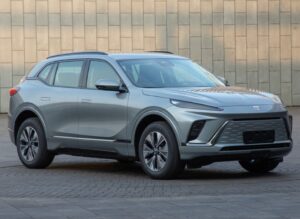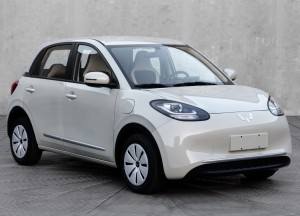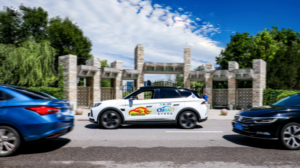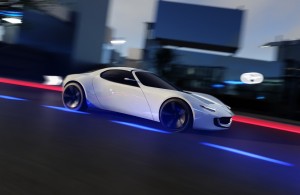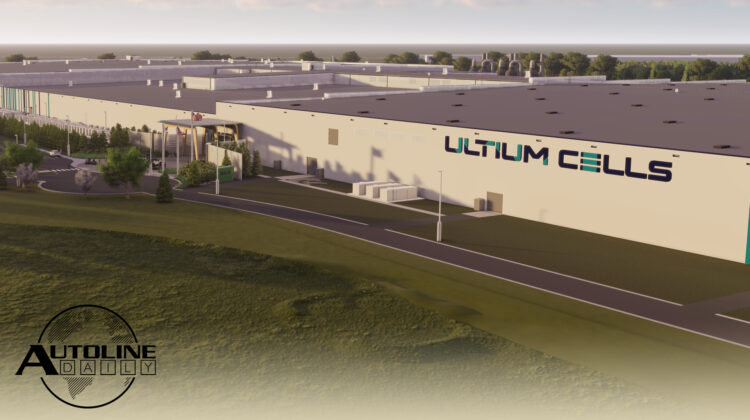
Listen to “AD #3454 – Tesla Slowing Down in China; Faraday May Have No Future; BEV Plants Going Next to ICE Plants” on Spreaker.
Follow us on social media:
Runtime: 9:29
0:00 Tesla Slowing Down in China
0:50 COVID Could Choke China’s Economy
1:45 Faraday May Have No Future
3:06 Speed Costs Money, How Fast Do You Want to Go?
3:46 GM Ramps Up EVs in China
4:39 Wuling Tries New Assembly Technique
6:23 China Allows No Driver in AVs
6:56 Mazda Flies Solo with EVs
7:52 BEV Plants Going Next to ICE Plants
Visit our sponsors to thank them for their support of Autoline Daily: Bridgestone, Intrepid Control Systems, and Schaeffler.
This is Autoline Daily, the show dedicated to enthusiasts of the global automotive industry.
TESLA SLOWING DOWN IN CHINA
Uh-oh, is Tesla starting to run into sales problems in China? Last month it cut prices there anywhere from 6% to 9%, depending on the model. That didn’t seem to help sales. Then it offered a $1,000 discount on insurance. That didn’t seem to help either as Tesla closed out October with over 16,000 unsold cars in inventory last month, the highest it’s ever had. And so this morning it cut prices in China again, by about $2,000 to $2,500. Delivery times to get cars have fallen dramatically which also suggests that Chinese car buyers are not as enamored with Tesla as they were just a few months ago.
COVID COULD CHOKE CHINA’S ECONOMY
Of course, every automaker in China could be in for a rough ride. At the end of the summer it looked like China would be reopening its economy as COVID cases looked like they might be under control. But now COVID cases are spiking again. Even though the rate of infection is half of what it is in the United States, China’s zero-Covid policy means that more cities face lockdowns. And that will hurt the economy. Volkswagen expected to sell 3.8 million vehicles in China this year, but now it’s knocked half a million vehicles off that forecast. And Berkshire Hathaway, the investment firm run by Warren Buffet, sold off another chunk of stock in BYD. This is the third time it’s sold stock this month. BYD’s stock is down 37% this year, and down 50% from its all-time peak in July.
FARADAY MAY HAVE NO FUTURE
Looks like EV startup Faraday Future could be going from bad to worse. It’s warning investors that it has “substantial doubt” that it can stay in business. It also says it doesn’t know when it can complete deliveries of its FF91 EV, which it planned to start delivering this month. If it can’t sell vehicles, it can’t make money. Faraday says it needs to raise more money from investors, but with EV startups out of favor, who’s going to risk investing in a startup that’s been in business since 2014 but still hasn’t made one vehicle? The company only has 369 pre-orders and only had a little more than $31 million cash on hand at the end of the third quarter.
SPEED COSTS MONEY, HOW FAST DO YOU WANT TO GO?
Would you pay a monthly fee just so your car could go faster? Would you pay $1,200? Mercedes is about to find out. It’s offering an OTA, what it calls an “Acceleration Increase,” for the EQE and EQS. Both the sedan and SUV models. And it significantly boosts performance. We’re talking 8-tenths to a full second faster 0-60. But it’s the cost that’s grabbing headlines. That twelve-hundred bucks is not a one-time fee, that’s per year. So, let us know what you think. Would you be willing to pony up that kind of cash?
GM RAMPS UP EVs IN CHINA
Earlier in the show we reported that things could be slowing down in China, but GM is about to roll out a bunch of EVs there. In fact, it’s accelerating its rollout of electrics and will offer 15 Ultium-based EVs across its brands by 2025. The Cadillac Lyriq is already on sale there and GM’s lifestyle brand, called the Durant Guild, announced the Celesiq as its first import model. Sometime this year, Buick is going to debut its first Ultium-based EV, which is called the Electra E5. The model is said to have a 241 horsepower electric motor, built by GM in China, and a lithium-ion battery pack supplied by CATL, but size is not known at this time. Its styling is very similar to the Electra X concept that debuted in May.
WULING TRIES NEW ASSEMBLY TECHNIQUE
GM is also expanding BEV manufacturing in China. It recently broke ground on a new plant that it says will be the most flexible automotive facility in the world. It adopts what GM calls the Smart Island production method. One main production line handles mass assembly and then little branch lines will do customized sub-assembly of vehicles. One of the vehicles that’s likely to be made there is the Wuling Air EV, which is the version of its popular Hongguang MINI EV that’s sold in Indonesia. But the Air EV will expand to other markets as well. Wuling just started making a left-hand-drive version of the car to go along with the right-hand-drive version. While these are inexpensive entry models, Wuling has plans to move more upscale. It’s coming out with a new model in the first half of next year, called the Bingo. Its styling looks like a Fiat to us, but it features a similar setup to the MINI and Air EVs. It has two power options, either 30 or 50 kW, and an LFP battery. Although, size and range have been revealed yet.
CHINA ALLOWS NO DRIVER IN AVS
Autonomous car companies like Argo are going under, but self-driving vehicles keep making progress. In China, the city of Beijing just let Baidu and Pony.ai use autonomous vehicles without a backup driver on board. The two companies are allowed to deploy a fleet of 10 self-driving vehicles in a 60 square kilometer area of the city. Waymo and GM Cruise already operate driverless AVs in the U.S., and we expect to see other AV companies get the go-ahead to do the same thing.
MAZDA FLIES SOLO WITH EVS
Little old Mazda looks like it’s going into the EV segment all on its own. It’s going to invest $10.6 billion to develop EVs and it’s partnering with several suppliers for EV components. It will roll out electric vehicles in three phases by 2030. In the first phase, Mazda will launch vehicles using its own electric technology. For the second phase, it will introduce a new hybrid system as well as launch BEVs globally. And in the third phase, it will have a full-fledged introduction of BEVs and it will even consider making its own batteries. Mazda says it expects EVs to account for up to 40% of its sales globally by 2030. But what puzzles us is why Mazda didn’t tap into Toyota’s keiretsu supply chain since Toyota owns 5% of the automaker from Hiroshima.
BEV PLANTS GOING NEXT TO ICE PLANTS
Here’s something we want to point out to you. Start paying attention to where legacy automakers are building their battery plants in the U.S. GM has battery plants in Lordstown, Ohio; Lansing, Michigan; Spring Hill, Tennessee, and it’s reportedly going to build one in New Carlisle, Indiana. You know what all those battery plants have in common? They’re right next to or nearby existing factories. Stellantis is building a battery plant in Windsor, Canada and Kokomo, Indiana. Same story: right next to ICE plants. Here’s why. Everyone is running into problems trying to hire people. And when you have to hire thousands of them, it’s even harder. So by building battery plants near existing plants they can start to move people from ICE production to BEV production. Not only does that give the car companies a source of experienced workers, it gives those workers job security, and it gives the communities where those plants are located a steady tax base. And we think we’re going to see even more battery plants get built where legacy automakers have legacy operations.
But that’s it for today, thanks for watching.
Thanks to our partner for embedding Autoline Daily on its website: WardsAuto.com
Seamus and Sean McElroy cover the latest news in the automotive industry for Autoline Daily.





